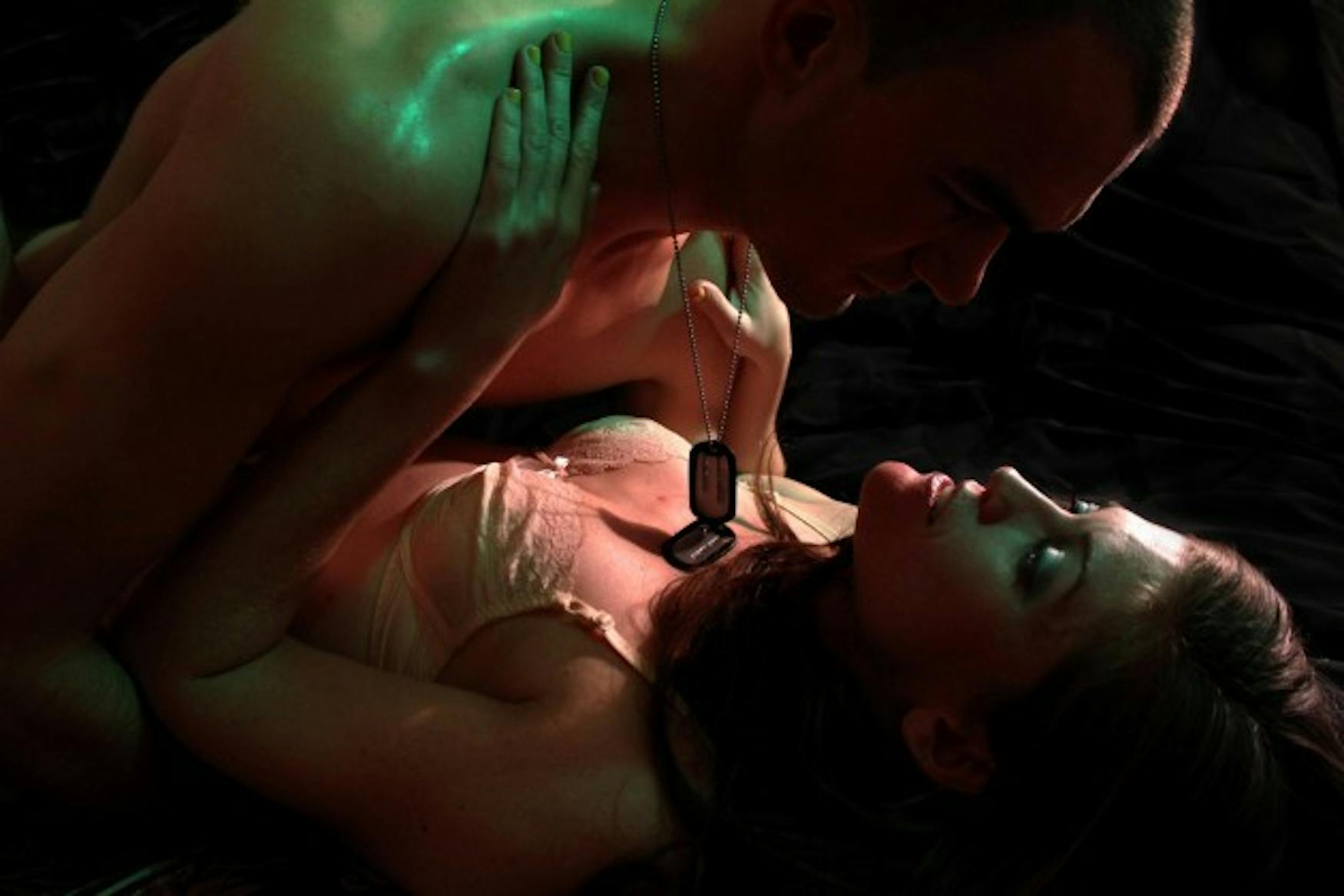Sexy, tension-filled play heats up the stage
You think you're in love.
No, that's not it. It's more like a coolly unsettling mix of shock, lust and desperation.
You see the half-naked blonde inches in front of you, covered with bite marks and a flimsy bathrobe dangling off her shoulder. Her hair is in electric disarray from a fight with her new husband. She gets so close you feel her breath. Then, for a second, she looks directly at you—gulp. Your insides squirm, but you're frozen in your seat. You want to look away, but it's impossible to take your eyes off such an unwaveringly vulnerable performance.
That's the feeling Mrs. Claude Dunphy (Erin Markey) stirs up in Tennessee Williams' Green Eyes, playing at the Ames Hotel on Court Street, Boston until Feb. 26. Markey's performance of this commanding yet fragile character is as good as it gets on a theater stage, and critics like The New Yorker's John Lahr agree.
Directed by Travis Chamberlain, for Company One, Green Eyes is an intimate, 45-minute, one-act show in a hotel room with a maximum of 25 audience members. It's also listed as 18-and-over only.
"Mrs. Dunphy's traits are basically the art of femininity," Markey said to me in a phone interview. "It's a blend of gentle and domineering." Originally from the South, Markey moved to New York to direct and act. On the phone, she certainly sounds like a normal, intelligent woman. That's why it's hard to believe Markey is the person who, night after night, becomes the crazed vixen we see stretched out on a 1970s-style motel room bed. As Dunphy, she draws out her syllables, giving each word the trademark seductive New Orleans drawl you hear from A Streetcar Named Desire's Blanche. It's a more luscious and pleading version of Markey's own South Carolina accent, and I couldn't get enough of it during the play.
There's just one other character in Green Eyes: the husband. Claude Dunphy, played by Alan Brincks, is a soldier on leave from the Vietnam War. Like Streetcar's Stanley, he's Tennessee Williams' typical Southern brute, highly suspicious of others and always either brooding or yelling. He and his wife wake up the morning after their honeymoon, and the tension between them builds immediately. "Where did you get those bruises?" he asks. "You gave them to me," she says. "No, I didn't," he says. This conflict is the basic premise of Green Eyes, but it's one that escalates into the chilling territory of domestic violence and sadomasochism.
The Ames Hotel is a fitting venue because claustrophobia is a major theme in the play. The Ames is an upscale boutique hotel with a cocktail lounge to the right of the lobby and two cramped elevators that lead to the redesigned bedroom. Located across from Old State House—where the Boston Massacre occurred—the hotel has narrow, dark-lit halls and an even narrower staircase.
The transformed room of Green Eyes takes the audience to 1970s New Orleans with a wooden-knobbed radio, a cheap rug, a forgotten brand of cigarettes and a handle of bourbon. The stage lights, placed in the corners, accentuate Brincks' and Markey's various poses while throwing their shadows onto the ceiling. There are too many plants in the room. It reminds you of the Vietnam jungle.
Williams wrote Green Eyes in 1970, but the play went unpublished until 2008. Many regard his later plays, especially obscure ones like Green Eyes, as inferior to classics like Streetcar and Cat on a Hot Tin Roof. Chamberlain's take on this short and brutal one-act proves that to be untrue.
Chamberlain sees Green Eyes as a way for Williams, who was outed in 1968, to respond to homophobic sentiments directed toward him at the time. Although this is what the director told me a few weeks ago, there are no obvious overtones of sexual transgression in the play. Perhaps Chamberlain snuck in a queer theme or two, but I didn't notice it, nor do I think Brincks and Markey convey it in their performances—it's how Green Eyes remains faithful to the writing while inviting multiple interpretations of what the play means at the same time. After all, the play hinges on subjectivity. It's impossible to figure out what happened between Mr. and Mrs. Dunphy the night before or why. It doesn't matter that they can't get their stories straight, though, since they—and the audience—simply get caught in the moment. That moment, that 45 minutes of ruthless twisting and turning, is more visceral and memorable than any I've experienced in theater.



Please note All comments are eligible for publication in The Justice.